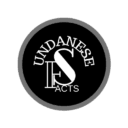The Origins of Surabi
Since 1923, Surabi has been an essential part of West Java’s culinary heritage. According to the Culinary Encyclopedia by LIPI, the word “serabi” comes from the Sundanese language, where “sura” means “big,” referring to its distinctive size. Traditionally cooked on clay stoves, Surabi delivers an authentic flavor that is hard to replicate. This unique preparation method has allowed Surabi to maintain its presence amidst ever-evolving culinary trends.
Not only does the delight of Surabi lie in its cooking process, but also in its accompanying sauce. The kinca sauce—a sweet concoction made from boiled palm sugar and coconut milk—adds a rich and authentic Indonesian touch. Over time, Surabi has undergone various innovations. Today, you can find Surabi with a wide range of tantalizing toppings, from durian sauce, chocolate, sprinkles, bananas, jackfruit, pandan, to oncom—a signature topping for Bandung-style Surabi.
Furthermore, the diversity of Indonesian cuisine is reflected in the variations of Surabi across different regions. For example, Surabi Solo and Surabi Bandung each have unique characteristics and local ingredients that set them apart. Thus, every variation of Surabi offers a different culinary experience.
Below is a recipe for making Bandung-style Surabi, complete with the necessary tools and ingredients, so you can enjoy the authentic taste of this traditional treat at home.
Surabi: A Traditional West Javanese Culinary Delight
When discussing traditional West Javanese cuisine, Surabi is a dish that always captures attention and offers an unforgettable taste. With its unique flavor and authentic cooking process, this dish has endured through generations.
Discover the history, origins, and recipe of Surabi in this article.
Read More:
Discover the Hidden Secrets of Sundanese Culinary and Culture!
Recipe and How to Make Surabi
Ingredients for Surabi:
- 250 grams of rice flour
- 50 grams of all-purpose flour
- 400 ml coconut milk
- ½ teaspoon salt
- A pinch of vanilla
- Cooking oil as needed
Ingredients for Oncom Topping:
- 150 grams of fried oncom
- 5 bird’s eye chilies
- 2 cloves of garlic
- 2 cm galangal
- Salt to taste
- Basil leaves to taste
Steps to Make Surabi:
- Combine all dry ingredients: rice flour, all-purpose flour, and salt in a bowl. Add coconut milk and vanilla, and mix well until a smooth, lump-free batter forms.
- Sauté all spices for the oncom topping until fragrant. Add the oncom and mix well. Stir in the basil leaves and cook until the liquid is reduced.
- Heat a non-stick pan over medium heat. Lightly grease the pan with cooking oil. Pour a portion of the batter into the pan, spreading it thinly to form a layer. Cook until the surface develops brown spots and the bottom is fully cooked.
- Remove the cooked Surabi from the pan and serve while hot. Add the oncom topping or other options like sweetened grated coconut or kinca sauce made from palm sugar.
By learning the recipe and how to make Bandung-style Surabi, you can try making it yourself at home! Don’t hesitate to experiment with various toppings and flavors—you might discover a new favorite combination. Enjoy and savor the deliciousness!
Read More:
Spicy and Authentic Sundanese Seblak Seasoning Recipe, Easy for Beginners








2 comments